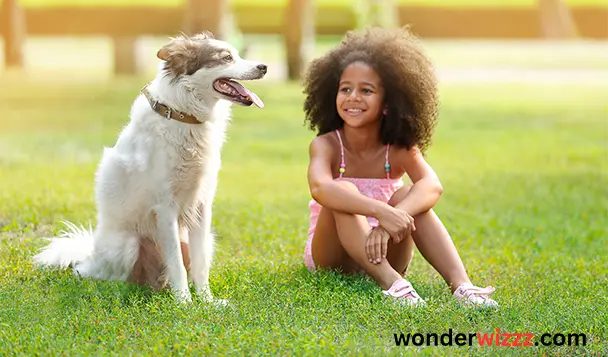What’s the Secret to a Happy Pet?

Introduction
Pets bring joy to our lives, but did you know their happiness is important too? Understanding what makes them happy is key. Let’s explore the main factors that affect how happy our pets are.
A. Brief Overview of the Importance of Pet Happiness
Having a happy pet isn’t just about cuddles and playtime; it’s crucial for their well-being. Just like us, pets have feelings and emotions. When they’re happy, they’re healthier and more content. So, ensuring our pets’ happiness is essential for their overall quality of life.
B. Introduction to the Main Factors Influencing Pet Happiness
Several things contribute to a pet’s happiness. It’s not just about food and shelter. Factors like love and attention, exercise, mental stimulation, and a safe environment play vital roles too. By understanding and fulfilling these needs, we can keep our furry friends smiling and wagging their tails. Let’s delve deeper into each of these factors to unlock the secret to a happy pet.

Understanding Pet Needs
To ensure our pets are happy, we must understand their needs. These needs can be divided into three main categories: physical, social, and environmental.
A. Physical Needs
- Nutrition and Feeding: Just like us, pets need proper food to stay healthy. It’s essential to provide them with balanced meals that meet their nutritional requirements. This keeps them strong and energetic.
- Exercise and Physical Activity: Pets need to move and play to stay fit and happy. Regular walks, playtime, and activities like chasing toys are vital for their physical well-being. It helps prevent boredom and keeps them from becoming overweight.
B. Social Needs
- Interaction and Companionship: Pets crave attention and love from their owners. Spending quality time with them, petting, and talking to them makes them feel loved and secure. It deepens the connection between the pet and its owner.
- Socialization with Other Animals and Humans: Pets enjoy meeting new friends, both furry and human. It’s important to introduce them to various people, animals, and places early on. This helps prevent fear and aggression and makes them more confident and well-adjusted.
C. Environmental Needs
- Comfortable Living Space: Pets need a cozy and safe place to call home. Providing them with a comfortable bed, shelter from extreme weather, and a clean environment ensures they feel secure and relaxed.
- Mental Stimulation and Enrichment: Pets are intelligent creatures that need mental stimulation to prevent boredom. Toys, puzzles, and activities that challenge their minds keep them engaged and happy. It’s important to provide variety and novelty to keep them mentally sharp.

Importance of Mental Well-being
Understanding our pets’ mental well-being is just as important as their physical health. Like humans, pets can experience stress and anxiety, which can affect their happiness and behavior.
A. Stress and Anxiety in Pets
Pets can feel stressed or anxious for various reasons. Changes in their environment, loud noises, being left alone for long periods, or even illness can trigger these feelings. It’s important to recognize the signs of stress in our pets, such as hiding, excessive barking or meowing, or changes in appetite or behavior.
B. Ways to Promote Mental Well-being
- Mental Stimulation Through Toys and Games: Providing our pets with toys and games that challenge their minds is essential for their mental well-being. Puzzle toys, interactive feeders, and games like hide-and-seek engage their brains and keep them mentally sharp. It’s like giving them puzzles to solve, which they find both fun and rewarding.
- Providing a Predictable Routine: Pets thrive on routine and predictability. Knowing what to expect gives them a sense of security and reduces their stress levels. Establishing a regular schedule for feeding, playtime, walks, and bedtime helps create stability in their lives. It’s like having a daily plan that they can rely on, which makes them feel safe and content.

Health and Veterinary Care
Ensuring our pets stay healthy is crucial for their happiness and well-being. Regular veterinary care and preventive measures play key roles in maintaining their health.
A. Regular Veterinary Check-ups
Regular visits to the veterinarian are important for keeping our pets healthy. During these check-ups, the vet examines our pets to ensure they’re in good health and catches any potential issues early. It’s like going to the doctor for a check-up to make sure everything is okay.
B. Preventive Measures Such as Vaccinations and Parasite Control
Preventive measures like vaccinations and parasite control help protect our pets from diseases and parasites. Vaccinations prevent illnesses, while parasite control, such as flea and tick prevention, keeps our pets comfortable and healthy. It’s like giving them a shield against sickness and pests.
C. Addressing Any Health Concerns Promptly
If our pets show signs of illness or discomfort, it’s essential to address these concerns promptly. Ignoring health issues can lead to more significant problems later on. Seeking veterinary care as soon as we notice something wrong ensures our pets get the treatment they need quickly. It’s like taking care of a small problem before it becomes a big one.

Bonding and Communication
Building a strong bond and understanding how to communicate with our pets is essential for their happiness and our relationship with them.
A. Importance of Bonding with Your Pet
Bonding with our pets creates a deep connection and sense of trust between us. It’s like forming a special friendship where we understand and care for each other.
B. Communication Cues in Pets
- Body Language: Pets use their bodies to communicate how they’re feeling. Wagging tails, relaxed posture, or flattened ears can indicate happiness, fear, or discomfort. Understanding these cues helps us respond appropriately to their needs.
- Vocalizations: Pets also communicate through sounds like barks, meows, or purrs. Each sound carries a different meaning, whether it’s a call for attention, a sign of contentment, or a warning. Learning to interpret these vocalizations strengthens our bond with them.
C. Strengthening the Bond Through Positive Reinforcement Training
Positive reinforcement training involves rewarding desired behaviors with treats or praise, which strengthens the bond between the pet and the owner. It’s like teaching them through kindness and encouragement, fostering a trusting and loving relationship.
Creating a Safe and Stimulating Environment
Providing a safe and stimulating environment is crucial for keeping our pets happy and healthy. Pet-proofing our homes and offering outlets for natural behaviors are essential steps in achieving this.
A. Pet-proofing the Home
Pet-proofing involves making our homes safe for our furry friends by removing potential hazards like toxic plants, and small objects they could swallow, and securing cabinets or areas they shouldn’t access. It’s like childproofing but for pets, ensuring they stay out of harm’s way.
B. Providing Outlets for Natural Behaviors
- Scratching Posts for Cats: Cats instinctively scratch to stretch, mark territory, and maintain their claws’ health. Providing scratching posts or pads gives them a designated place to satisfy this instinct, saving our furniture from their claws.
- Chew Toys for Dogs: Dogs love to chew, whether it’s to relieve boredom, teething discomfort, or to keep their teeth clean. Offering a variety of chew toys helps satisfy this need and prevents them from chewing on inappropriate items like shoes or furniture.
C. Incorporating Mental Enrichment Activities
Mental enrichment activities stimulate our pets’ minds and prevent boredom. This might involve toys that challenge, feeders that engage, or hiding treats for discovery. It’s like giving them a fun challenge that keeps them entertained and engaged.
Tailoring Care to Individual Needs
Each pet is unique, and understanding their individual needs is essential for their happiness and well-being. Tailoring our care to accommodate these differences ensures our pets receive the best possible care.
A. Recognizing Differences Between Species and Breeds
Different species and breeds have distinct characteristics and requirements. For example, while some breeds of dogs may need more exercise, others may prefer lounging indoors. Recognizing these differences helps us provide appropriate care that suits their specific needs.
B. Considering Age-related Needs
Pets’ needs change as they age, just like humans. Young animals may require more playtime and training, while older pets may need more rest and care for age-related conditions. Considering their age helps us adapt our care routines to provide the appropriate level of support.
C. Adapting Care Routines to Accommodate Any Special Requirements
Some pets may have special requirements due to health issues, disabilities, or behavioral quirks. Adapting our care routines to accommodate these needs ensures they receive the attention and support they require to thrive. It’s like customizing their care plan to address their specific challenges and preferences.
Conclusion
As we wrap up our exploration of pet happiness, let’s recap the key points and reflect on the importance of taking a holistic approach to pet care while emphasizing the need for ongoing learning and adaptation.
A. Summarize Key Points on Ensuring Pet Happiness
Ensuring our pets’ happiness involves understanding and fulfilling their physical, social, environmental, mental, and health needs. By providing love, proper nutrition, exercise, mental stimulation, veterinary care, and a safe environment, we create the foundation for their happiness and well-being.
B. Emphasize the Significance of a Holistic Approach to Pet Care
A holistic approach to pet care means considering all aspects of our pets’ lives and well-being. It’s about looking at the big picture and addressing their physical, emotional, and mental needs. This comprehensive approach ensures our pets are happy, healthy, and thriving.
C. Encourage Ongoing Learning and Adaptation to Meet Evolving Pet Needs
Pets’ needs can change over time due to factors like age, health, and life circumstances. It’s essential to stay informed, learn new things, and adapt our care routines to meet their evolving needs. By being attentive and responsive to our pets’ changing needs, we can continue to provide the best possible care and ensure their ongoing happiness and fulfillment.
People also ask
What makes a pet happy?
Attention, proper care, love, and fulfilling their basic needs like food, water, and shelter.
How do I make sure my pet is happy?
Provide a safe environment, regular exercise, mental stimulation, and affectionate interactions.
What is the secret to a happy dog?
Regular exercise, companionship, positive reinforcement training, and a loving home environment.
What do pets love most?
Attention from their owners, playtime, treats, and being included in family activities.
How can I love my pet?
Spend quality time with them, pet them, play with them, and provide care and attention.
How do you make your pet love you?
Show them affection, provide for their needs, and be consistent, patient, and understanding.



